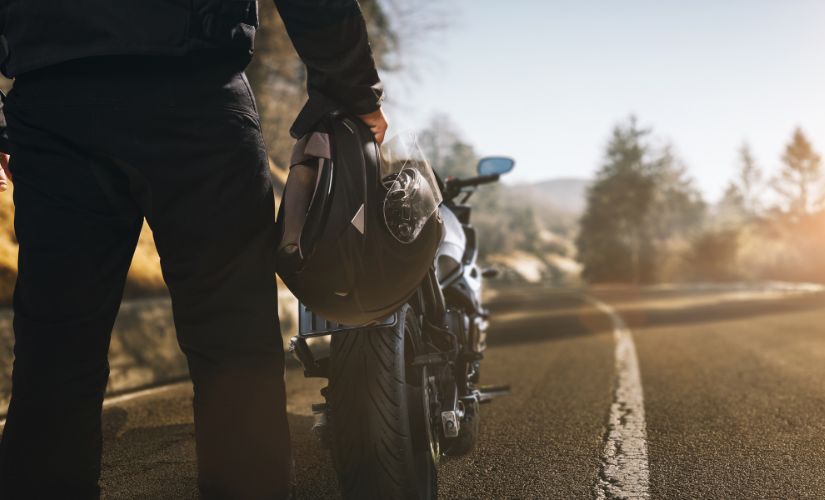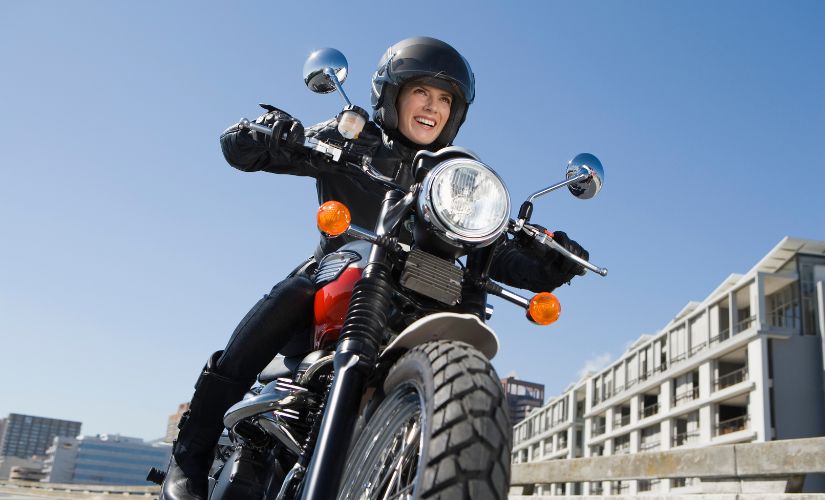Motorcycling in Orange County offers an incredible sense of freedom, with scenic coastal routes and ideal weather for riders. However, riding a motorcycle also comes with its own set of risks, especially in areas with heavy traffic and varied road conditions. According to the National Highway Traffic Safety Administration (NHTSA), motorcyclists are more vulnerable on the road compared to other vehicle drivers, leading to a higher incidence of severe injuries and fatalities. Therefore, adopting best practices in motorcycle safety isn’t just advisable—it’s essential.
1. Wear a Helmet—Always
Wearing a helmet is the most crucial safety step for any motorcyclist, and California law mandates helmet use for good reason. According to NHTSA studies, helmets are estimated to be 37% effective in preventing fatal injuries. Even experienced riders are at risk of accidents due to unforeseen factors such as distracted drivers, road hazards, or weather changes. Helmets provide critical protection for your head and brain, significantly reducing the severity of injuries in the event of an accident.
When choosing a helmet, ensure it meets the Department of Transportation (DOT) standards and fits snugly. Opt for a full-face helmet for maximum coverage, as it protects your face and jaw while offering clearer visibility. Look for additional safety features like anti-fog visors and chin straps that stay securely fastened. Remember, the best helmet is one that’s comfortable, fits well, and is worn on every ride.
Key Benefits of Wearing a Helmet:
- Protects the Head and Brain: Reduces the risk of severe head injuries.
- Improves Visibility: Full-face visors reduce glare and shield from debris.
- Shields Against Weather: Offers protection from wind, rain, and road elements.
2. Invest in Quality Protective Gear
Protective gear goes beyond helmets and plays a significant role in minimizing injuries in case of a fall or accident. A durable jacket, gloves, pants, and boots are essential pieces of a motorcyclist’s armor. Jackets and pants made of leather or reinforced textiles provide extra resistance to abrasions, ensuring you are well-protected if you slide along the road. Many motorcycle jackets and pants come with built-in padding in critical areas such as the shoulders, elbows, and knees, offering an added layer of safety.
For your hands, gloves are crucial. They improve your grip on the handlebars, reduce fatigue, and protect your hands from both weather and impact. Boots should cover the ankles and have non-slip soles to keep your feet securely planted on the bike’s footrests, preventing slippage and providing support during quick stops.
Recommended Gear:
- Jacket: Choose leather or textile with padding.
- Gloves: Opt for durable gloves that provide good grip and protection.
- Pants: Reinforced or armored pants designed for motorcycling.
- Boots: Sturdy, ankle-covering boots with a non-slip sole.
3. Keep Your Motorcycle in Optimal Condition
Regular maintenance is essential for a safe ride. A well-maintained motorcycle performs better and reduces the likelihood of mechanical issues on the road. Start by checking the tires; they should be properly inflated and have sufficient tread to handle Orange County’s varied road surfaces. Low tire pressure or worn-out treads can compromise your bike’s stability, especially at high speeds.
Brakes are another critical component. Test your brakes regularly to ensure they are responsive and can stop the bike efficiently. Additionally, check all lights and signals to ensure other drivers can see you clearly, especially in low-light conditions. Don’t overlook the fluids—oil, brake fluid, and coolant levels must be adequate for smooth performance. If you notice any issues with your motorcycle’s performance, address them promptly to prevent breakdowns or malfunctions on the road.
Maintenance Checklist:
- Tire Pressure: Check frequently to ensure proper inflation.
- Brakes: Test brakes before each ride to ensure reliability.
- Lights and Signals: Make sure they’re functioning properly for visibility.
- Fluids: Check and top up oil, brake fluid, and coolant as needed.
4. Follow Speed Limits and Avoid Excessive Speeding
Speeding is one of the leading causes of motorcycle accidents, and it’s particularly dangerous on motorcycles due to limited protection compared to enclosed vehicles. Maintaining a safe speed gives you more time to respond to obstacles, pedestrians, or sudden changes in traffic. It also enhances your control over the motorcycle, especially on curves or uneven road surfaces.
Orange County has a variety of speed limits depending on the area, so it’s essential to stay aware of these and adjust accordingly. Adhering to speed limits doesn’t just keep you safer—it helps you avoid costly tickets and ensures you’re riding responsibly among other drivers.
Why Speed Limits Matter:
- Enhanced Reaction Time: More time to respond to unexpected obstacles.
- Improved Control: Lower speeds offer better handling on varied terrains.
- Legal Safety: Avoid tickets, fines, and potential legal consequences.
5. Stay Visible to Other Drivers
Motorcycles are significantly smaller than most vehicles, making it easier for drivers to overlook them, particularly in their blind spots. To minimize this risk, make a conscious effort to stay visible. Wear brightly colored or reflective clothing, especially if you’re riding at night. Use your headlight even during daylight hours to make your presence known, and consider adding reflective tape to your helmet and motorcycle to catch the attention of other drivers.
Whenever you’re planning to change lanes or turn, signal early and clearly. Sudden moves without signaling can surprise drivers, leading to potentially dangerous situations. By making yourself as visible as possible, you improve your chances of being seen and reduce the likelihood of accidents.
6. Exercise Caution When Lane Splitting
California is one of the few states where lane splitting is legal, but it should be done cautiously. Lane splitting involves riding between lanes of slow-moving or stopped traffic, which can be risky if not executed carefully. Avoid lane splitting when traffic is moving at high speeds or in low-visibility conditions, and never assume that drivers will expect you to pass between lanes.
When lane splitting, maintain a safe distance from other vehicles, be cautious of sudden lane changes, and avoid drivers’ blind spots. The goal is to maneuver through traffic safely without surprising other drivers or putting yourself at risk.
Lane Splitting Safety Tips:
- Be Mindful of Traffic Speed: Lane split only when traffic is slow.
- Stay Clear of Blind Spots: Position yourself where drivers can see you.
- Signal Intentions: Use signals when possible to communicate with drivers.
7. Adopt a Defensive Riding Style
Defensive riding is essential for motorcyclists, especially in busy areas like Orange County where traffic can be unpredictable. Defensive riding means always staying alert and being prepared for the actions of other drivers. Assume that other vehicles might not see you, and be ready to take evasive action if necessary.
Avoid aggressive maneuvers like tailgating or weaving through traffic. Instead, maintain a safe following distance, allowing for enough space to react if the vehicle in front of you brakes suddenly. Stay alert for signals, brake lights, and potential hazards on the road. By riding defensively, you reduce your chances of an accident and are better prepared for unexpected situations.
Defensive Riding Techniques:
- Maintain Distance: Keep enough space between you and other vehicles.
- Anticipate Hazards: Look ahead and predict possible obstacles.
- Stay Calm: Avoid aggressive behavior and ride cautiously.
8. Avoid Riding in Poor Weather Conditions
Orange County generally enjoys pleasant weather, but rain and fog can occur, creating unsafe conditions for motorcyclists. Wet roads can reduce traction, making it harder to control your bike and increasing the risk of sliding. Fog can reduce visibility, making it more challenging to see and be seen by other drivers. If possible, avoid riding during inclement weather. Postpone your ride or choose an alternative mode of transportation until conditions improve.
If you do need to ride in less-than-ideal weather, take extra precautions by reducing your speed and keeping a greater following distance. Avoid sudden braking, as this can cause the bike to skid, and be especially cautious on painted road markings, which can be slippery when wet.
Weather Safety Precautions:
- Check the Forecast: Plan rides around weather conditions.
- Slow Down: Reduce speed to maintain control on wet roads.
- Increase Distance: Allow more space between you and other vehicles.
9. Never Ride Under the Influence
Riding a motorcycle requires heightened coordination, balance, and focus—qualities that can be severely impaired by alcohol or drugs. In California, riding under the influence carries severe penalties, and the risks associated with impaired riding are substantial. Alcohol and drugs slow your reaction time, impair your judgment, and decrease your coordination, making it dangerous to operate any vehicle.
If you’ve been drinking or using substances, do not ride. Arrange for a safe way home or wait until you’re sober before getting on your bike. By choosing to ride only when fully alert, you’re ensuring your safety as well as the safety of others on the road.
10. Take a Motorcycle Safety Course
Enrolling in a motorcycle safety course is a valuable investment for both new and experienced riders. Safety courses teach essential riding skills, advanced maneuvers, and defensive techniques that can make a difference in emergency situations. Courses also cover the specific challenges motorcyclists face on the road, from avoiding hazards to managing tight turns.
Completing a certified safety course can also benefit you financially, as many insurance companies offer discounts to riders who have taken safety classes. Most importantly, the confidence and skills gained from a safety course can improve your overall riding experience, making you a safer and more responsible rider.
Conclusion
Motorcycling in Orange County offers unparalleled freedom and enjoyment, but safety should always be a priority. By adhering to these 10 safety tips, you can significantly reduce your risk of accidents and contribute to a safer road environment. Each tip serves as a reminder of the importance of preparation, caution, and responsibility when riding.
If you or a loved one has been involved in a motorcycle accident, seeking legal assistance can be crucial for understanding your rights. Motorcycle Accident Attorney Orange County specializes in motorcycle accident cases and is here to help you navigate insurance claims and legal processes. Contact their team of experts dedicated to providing the guidance and support you need to recover and get back on the road with confidence.






